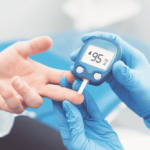
By Jeff Fallon
Like so many world-changing events, the COVID-19 pandemic changed everything seemingly in no time. When the first case was reported in Wuhan on New Year’s Eve the US healthcare conversation was dominated by debate of ACA repeal and talk of a frothy digital health investment phase. The future of healthcare appeared to be more of the same with a sprinkle of digital health promise on top. The whiplash just ahead was predicted by few and prepared for by fewer. Hospitals quickly found themselves either battling a lethal virus without enough PPE or fortunately spared the medical disaster but facing the financial cataclysm of expensive buildings sitting empty as elective care and ED visits stopped.
This is worrisome. From a patient’s perspective, what would take to keep you from going to the hospital with an active Myocardial Infarction? Healthcare is dealing with major repercussions from patient anxieties. “Elective” can be a bit of a misnomer. People tend to think about things like liposuction as “elective,” but some there are a lot of “elective” procedures that are still medically necessary. Patients need cancer-related or heart surgeries. Those patients are worried, and rightfully so.
Now the US is on its way back to allowing those “elective” procedures. While returning to normal health and revenue is certainly welcome, challenges await with opportunities ahead. Both chronic and acute conditions likely progressed while care was delayed. As if that wasn’t enough, returning for care brings a new level of anxiety and stress about contagion risk. While we’ve done well in flattening the curve, COVID-19 remains a threat worldwide. And regardless of the odds of contracting it, walking blissfully into any place that recently occupied COVID-infected people will not be easy for many, and it’s no medical myth that stress doesn’t help health or healing.
To be ready for this returning crowd of unwell and unsettled patients, healthcare institutions should gear up. Offer insights on how you’ve prepared for this influx. How are you now cleaning your buildings and equipment? What precautions have been made to reduce the chances of exposure to and from staff and others? What can people expect in terms of an experience when they return? Hospitals should over communicate their actions on the above. Digital signs across the hospital campus are a tremendous tool to give timely and highly contextual information to all who enter. And, like so much good marketing now, these high definition smart displays should evoke emotions that influence feelings while sharing this vital information to reduce stress and comfort those tepidly returning for care. It’s actually more than “marketing;” it’s mass communication with a specific purpose to allay fear and reduce anxiety so that healthcare resumes.
And what about the terrific medical professionals whose clinical muscle memory and heroic selfless action led us through the pandemic? Doctors and nurses are surely ready to care for the many people who so desperately need their care. There’s no doubt they are up to the clinical challenges ahead. But are they equipped to calm the fears of the nervous who need their care while they also actually deliver it? Do they have the time to do so and is it fair to ask doctors and nurses to take this on alone? Before the world changed, engaging patients was too often a short chat and a pamphlet extended on the way out of the room. That wasn’t great then and won’t be enough moving forward. Americans who have supercomputers in their hands and use them to make decisions will be informed. Interactive patient systems enable the care team to step between the patient and Dr. Google by delivering the right patient-specific video education about their condition.
Finally, our country still expects us in healthcare to bend the cost curve even while we bend the COVID-19 curve. And hospital bedside interactive patient systems enable a fortuitous one-two punch on both counts as they support engagement between patients and their personal care team from a pandemic-safe and healthy distance. Virtual rounds from the nurses’ station or another zip code into the patient room spare PPE while also affording doctors and nurses fantastic new efficiency. Delivering bedside video education and automatically documenting completion and comprehension leverages patients’ obvious preference for video engagement while keeping everybody at a safer distance.
As this world which consumes hundreds of millions of hours of video daily comes back for care, providers who thoughtfully wire innovative digital health into their care processes will win on efficiency and engagement. Those providers will achieve lower costs, greater outcomes, and increased satisfaction. Under value-based care, pandemic or not, engaging patients in their own care is a core strategy for performance improvement and an interactive patient system is an essential tool to engage patients efficiently and effectively.
Author Bio:
Jeff Fallon brings over 30 years of experience in healthcare technology, medical devices, pharmaceuticals, and diagnostics to eVideon as their Chief Executive Officer. Prior to joining eVideon, he helped distinguished organizations such as Johnson & Johnson and patient experience technology companies forge innovative strategic relationships and strategies. He earned a BA from Duquesne University, an executive MBA at the University of Pittsburgh, Katz School of Business, and completed a health economics fellowship at the University of Pennsylvania, Wharton School. He is also a member of the American College of Healthcare Executives and a former member and current advisor to the Board of Directors for Western Pennsylvania HIMSS chapter.
The Editorial Team at Healthcare Business Today is made up of skilled healthcare writers and experts, led by our managing editor, Daniel Casciato, who has over 25 years of experience in healthcare writing. Since 1998, we have produced compelling and informative content for numerous publications, establishing ourselves as a trusted resource for health and wellness information. We offer readers access to fresh health, medicine, science, and technology developments and the latest in patient news, emphasizing how these developments affect our lives.








